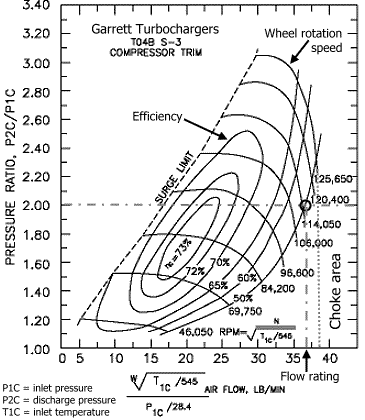Referencing a typical centrifugal compressor used in an automobile turbo application:
1. What atmospheric conditions is the MAP based based on? Standard Day?
2. What would be the effect on the map with a departure from this temperature, eg 160 *F (620 *R) CIT? Does the whole map translate to the left? Down?
1. What atmospheric conditions is the MAP based based on? Standard Day?
2. What would be the effect on the map with a departure from this temperature, eg 160 *F (620 *R) CIT? Does the whole map translate to the left? Down?

